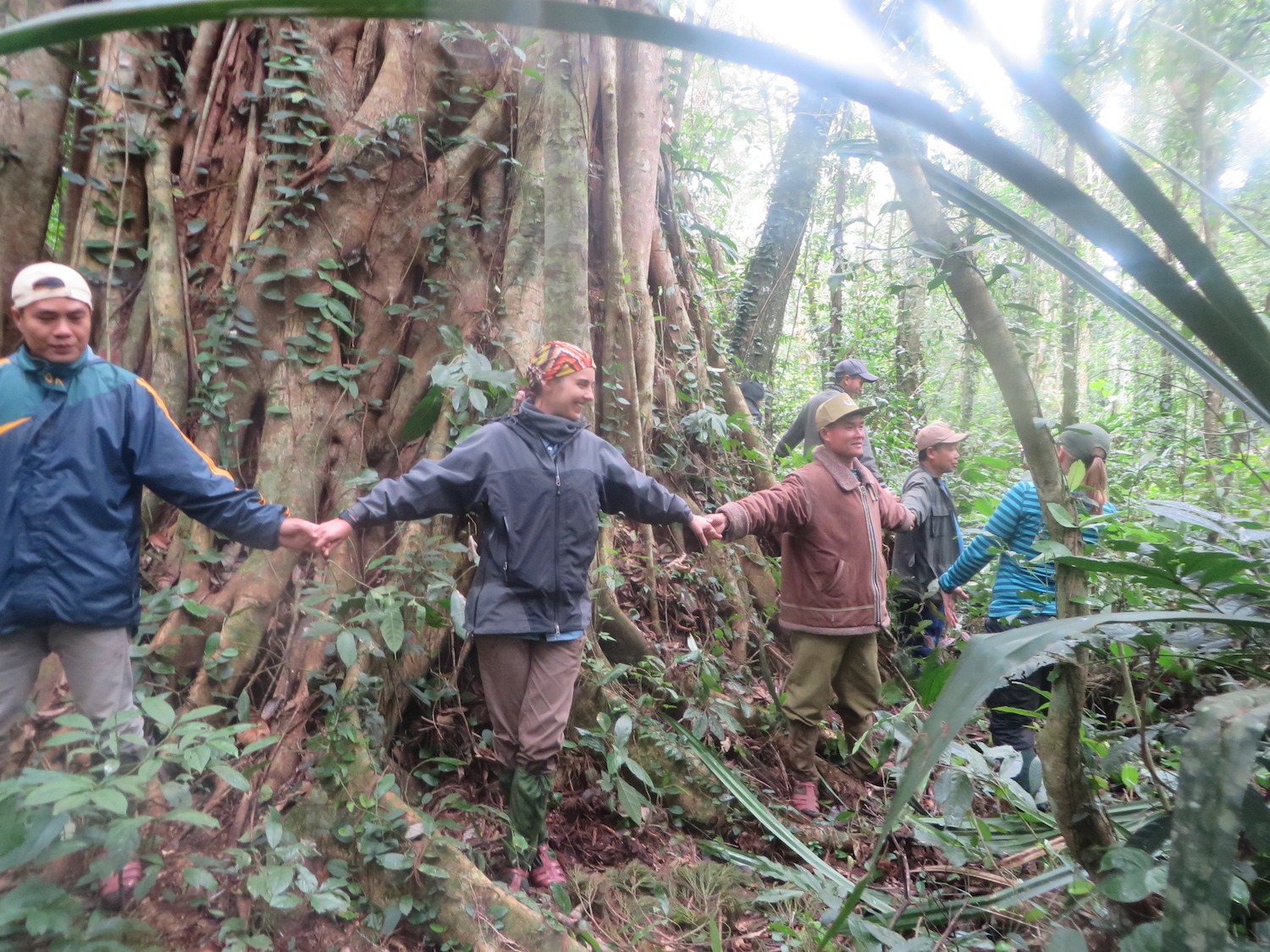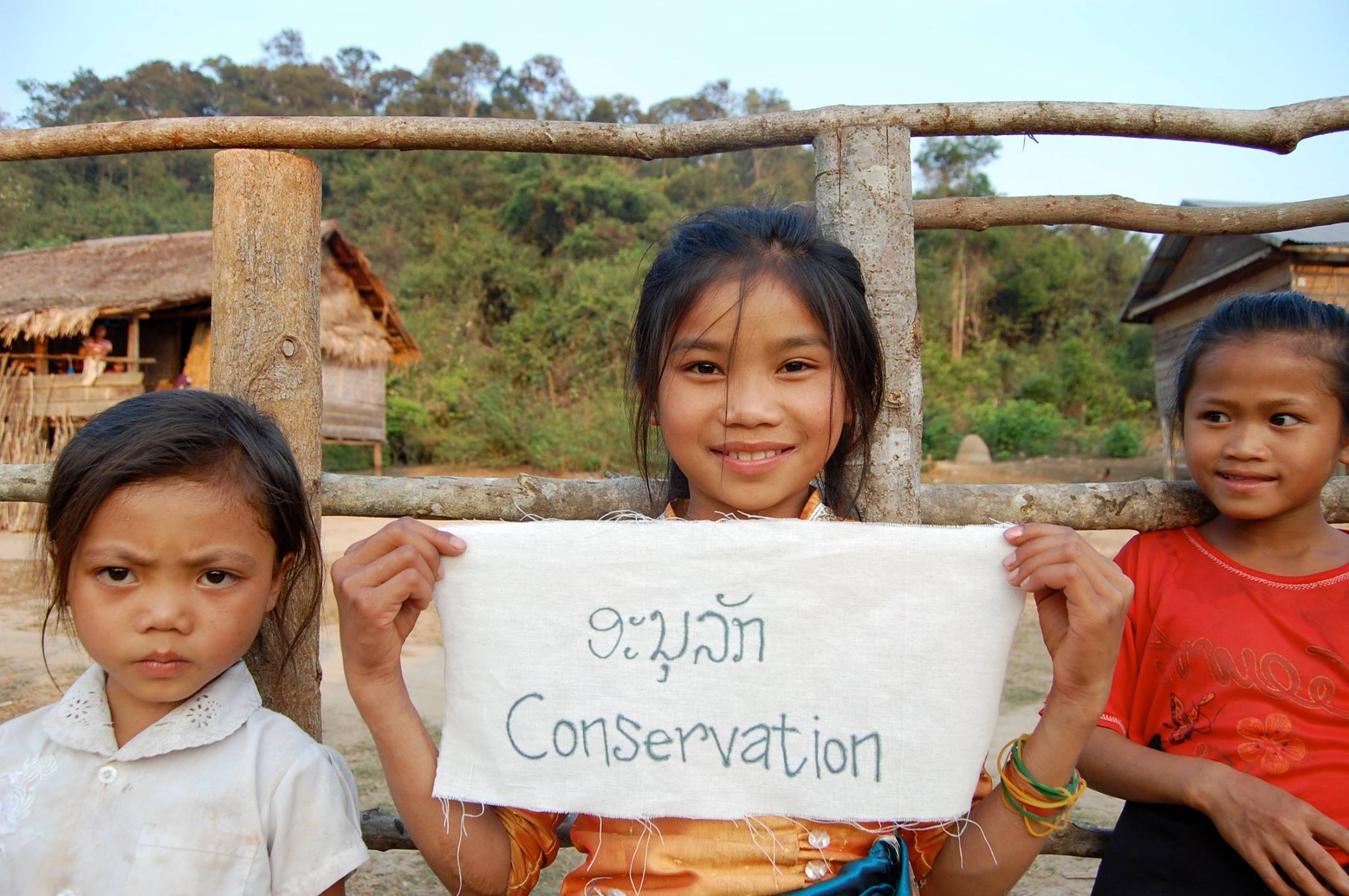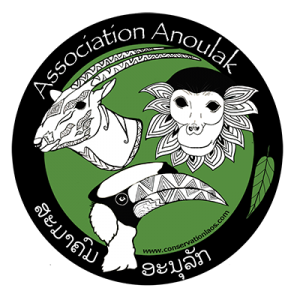Association Anoulak (conservation in Lao language) is a French-registered association (registered in September 2014) dedicated to the long-term conservation of biodiversity and human minority communities resilience in Lao People’s Democratic Republic (Lao PDR or Laos), in particular in the Annamite Mountains
Association Anoulak implements activities on:
- Biodiversity research and monitoring for conservation – To understand the distribution, monitor wildlife populations and to increase our knowledge on in-situ species ecology of the threatened and endemic species in the Annamite Mountains which will inform conservation management.
- Community anti-poaching patrols – To reduce illegal poaching of species in the wild allow their populations to remain stable or recover from unsustainable hunting.
- Community outreach and awareness raising – To inform local communities about the links between a healthy environment and nature for people’s sustainable livelihoods.
- Community sustainable livelihoods – To provide alternative and sustainable livelihoods and income to local communities to reduce their reliance on natural resources.
- Capacity building – All our programs includes training of Lao nationals and local communities to inspire and train the new generation of Lao conservationists and biologists and ensure the sustainability of and sense of ownership all our projects at the national level
Our Mission Statement
Our mission is to develop and implement innovative, multidisciplinary and sustainable approaches to the long-term conservation of the biodiversity & ecosystems and to the resilience of human minority communities in the Annamite Mountains of Laos, in particular in Nakai-Nam Theun National Park, with a skilled, passionate and dedicated team of nationals and internationals.


Our long-term goal
To safeguard the biodiversity and ecosystem in Nakai-Nam Theun National Park and support the local community for their sustainable livelihoods and development.
Our strategic objectives
- To design, experiment, implement, disseminate and promote models or replicate best practice approaches for the long-term sustainable conservation of biodiversity and habitats of Nakai – Nam Theun National Park (NP)
- To collaborate with national and international institutions or individuals sharing the same values to achieve our mission
- To provide opportunities, training and supervision for Lao students to help build their capacity to become the next generation of Lao environmentalists and conservationists
- To study and monitor populations of the little known animal and plant species of Nakai – Nam Theun NP to contribute to their conservation and to the global scientific knowledge
- To work with local communities of Nakai – Nam Theun NP through (i) outreach and education activities to promote our mission and vision; (ii) their empowerment to act for the protection of habitat and wildlife and support them in the development of sustainable livelihoods
Our Vision
The restoration of the biodiversity of NNT NPA with empowered local community as principal actors and advocates for the safeguard of the habitat and wildlife through conscious and informed sustainable livelihoods and development.
A strong, dedicated, passionate and skillful scientific community of young Lao nationals acting together for the sustainable future of Laos? forest, biodiversity, environment and people.
Our Flagship Logo

The Critically Endangered saola (Pseudoryx nghetinhensis)
The saola is endemic to the Annamite Mountains of Laos and Vietnam. It is one of the most elusive and most threatened mammal species in the world. It was only discovered to science in 1992.
The Endangered red-shanked douc (Pygathrix nemaeus)
The red-shanked douc is one of the most charismatic and most beautiful primates in the world. It is restricted to forests in Laos, Cambodia and Vietnam. Its world’s largest population is found in Laos and in particular in Nakai-Nam Theun.
The Near Threatened great hornbill (Buceros bicornis)
This charismatic large bird is the heaviest of the Asian hornbills and to us represents the symbol of the diversity of bird species residing in Nakai-Nam Theun.
